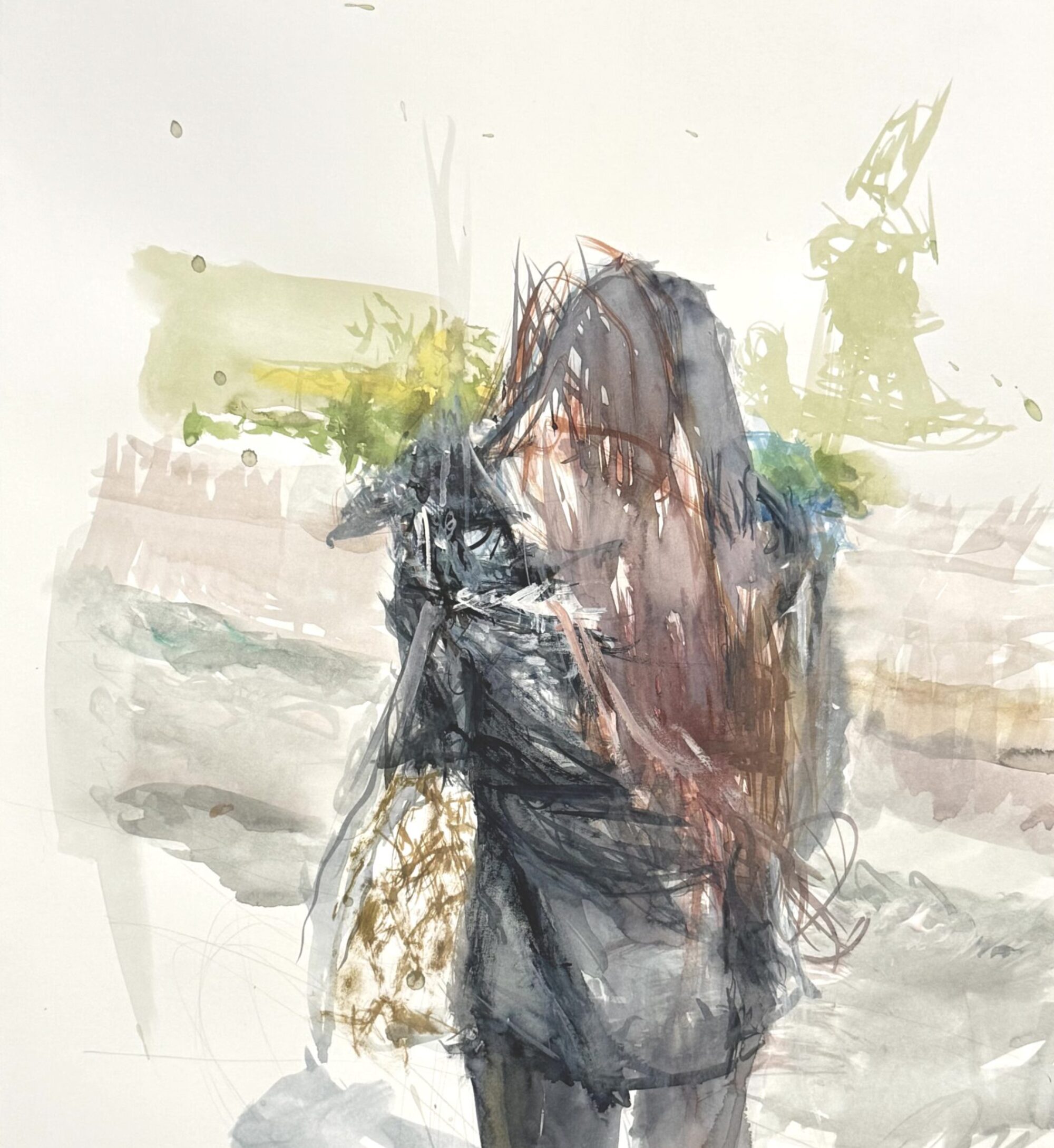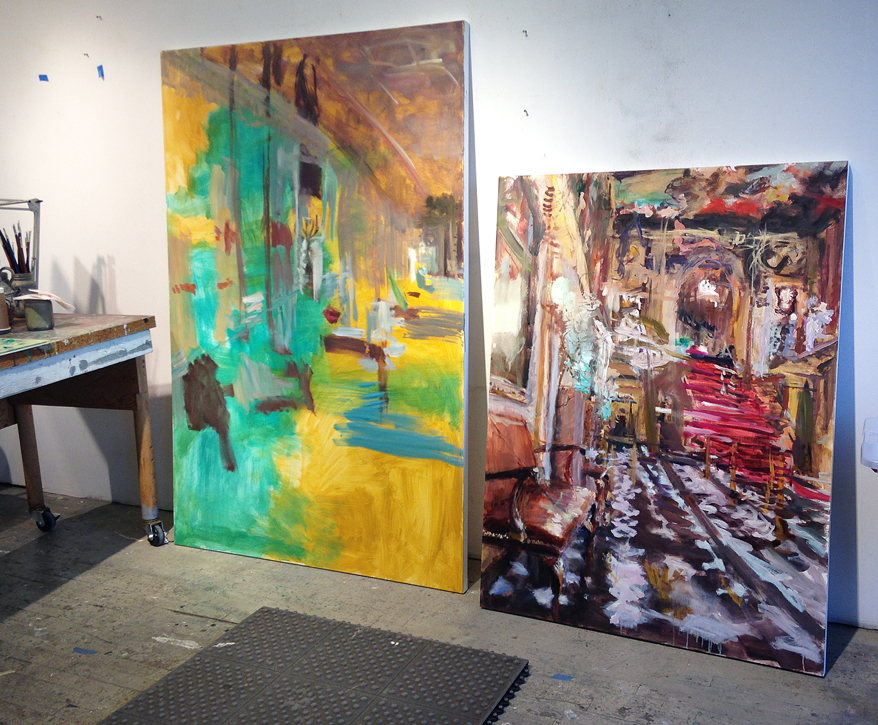This is something I’m working on right now. It’s the interior of a bistro I fell in love with on Rue Oberkampf in Paris. I really enjoyed the zing of colour of the fruit, and the play of morning light bouncing around on various surfaces. And of course the fuschia pink bar stool are très française. At right are gleaming bottles and glassware which will be really fun to paint when I dive back in to finish this.

Initially I made a smaller version of this painting, but realized the subject warranted a bigger scale for a more immersive experience.

The new canvas is 24 x 32 inches. This is not a custom size you can find off the rack at the art supply store, so my darling man cut down a 24 x 36 canvas for me.
I like to use a grey palette at this stage, so I can see how highlights stand out against that midtone. The final hits on the painting are usually the lightest lights, and the darkest darks. I am nuts about the in-between colour mixtures that you can’t quite name, the “greyed down” colours which help the brighter colours sing out.

As usual this is a process through which the painting will eventually tell me what it wants to be, and the meaning comes through the making.
When I see this kind of setting, I can’t help but think of Manet’s brilliant painting A Bar at the Folies-Bergère which he painted in 1882. I dare not compare my work to his, but I am certainly inspired by his lush use of thick paint, and his ability to strategically choose what to emphasize in the composition. This is exceptionally sophisticated art-making.

I was fortunate to be able to view this painting first-hand at the Courtauld Institute in London. This is from the institution’s website:

This painting was Manet’s last major work. It represents the bustling interior of one of the most prominent music halls and cabarets of Paris, the Folies-Bergère. The venue opened in 1869 and its atmosphere was described as “unmixed joy”. In contrast, the barmaid in Manet’s representation is detached and marooned behind the bar.
The Folies-Bergère was also notorious as a place to pick up prostitutes. The writer Guy de Maupassant described the barmaids as “vendors of drink and of love”.
Manet knew the place well. He made a number of preparatory sketches there but the final work was painted in his studio. He set up a bar and asked one of the barmaids, Suzon, to serve as his model.
The painting was first exhibited in 1882, at the annual fine arts exhibition in Paris, the Salon. Visitors and critics found the composition unsettling. The inaccuracy of the barmaid’s reflection, shifted too far to the right, has continued to spark much debate.
To my mind, good painting that stands the test of time needs to be aesthetically captivating to keep the viewer’s attention (it is visual art after all), but also open to a number of interpretations that cannot be locked down.
However as humans we are captivated by story; we are compelled to know more.
It is possible that he was directly pointing to the barmaid being just another seductive object for consuming with one’s gaze–notice the two round white electric globes flanking her, echoing the lens of binoculars held by a woman in the crowd.
Manet was also known to be an admirer of the work of Spanish court painter, Diego Velàsquez. A similar contradictory space and perplexing riddle are present in Velàsquez’ Las Meninas.

The painter is looking out at the scene he is creating. Like in Manet’s Bar scene, in the spotlight here is also a beautiful female wearing a corsage on her breast. She looks out at us, while her courtiers attend her. At back is a also a mirror, this time reflecting the images of the king and queen who in this space would seem to be in the studio but only apparent through their reflection. Their physical presence is only implied, and is outside the frame. In the 17th century, when this was painted, the young princess was being groomed to be the wife and queen in a politically arranged marriage to further the power of the Spanish monarchy. So she too is merely an object for trade. Everyone here has their role to play, and know their place.
But although it would appear that all is luxury and ease, the Spanish monarchy was in fact crumbling and its King, Philip II who was Velasquez’ patron, was a weak ruler. One could say that Velàsquez was a skilled propaganda artist. The fact that he painted himself into this image may suggest he is saying directly to future viewers of his masterpiece, “I painted this, and I knew what was actually going on.”
Velàsquez, an avid reader of philosophy, knew that creation is alchemy. We artists conjure our own realities through the power of our imaginations, with the skills of our hearts, minds, and hands.
C’est cool, non?
A bientôt, Val
























